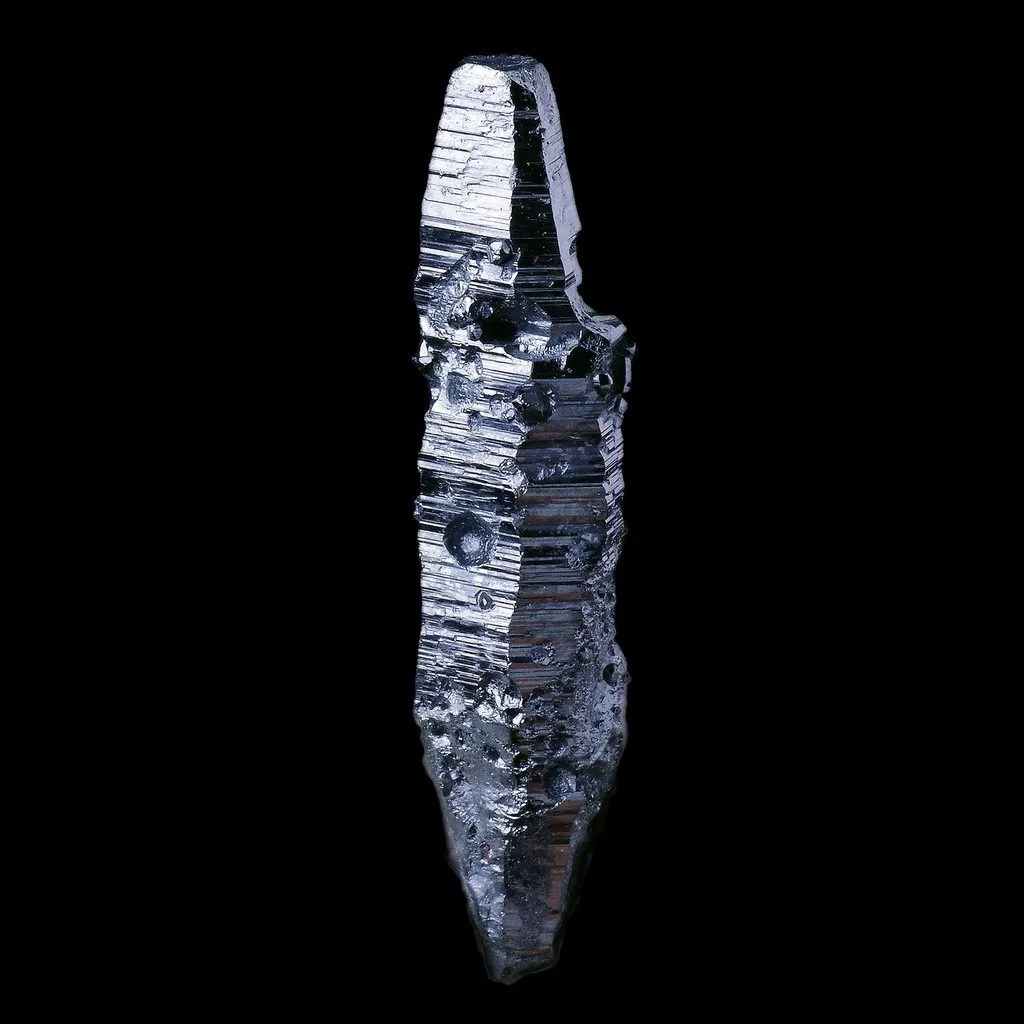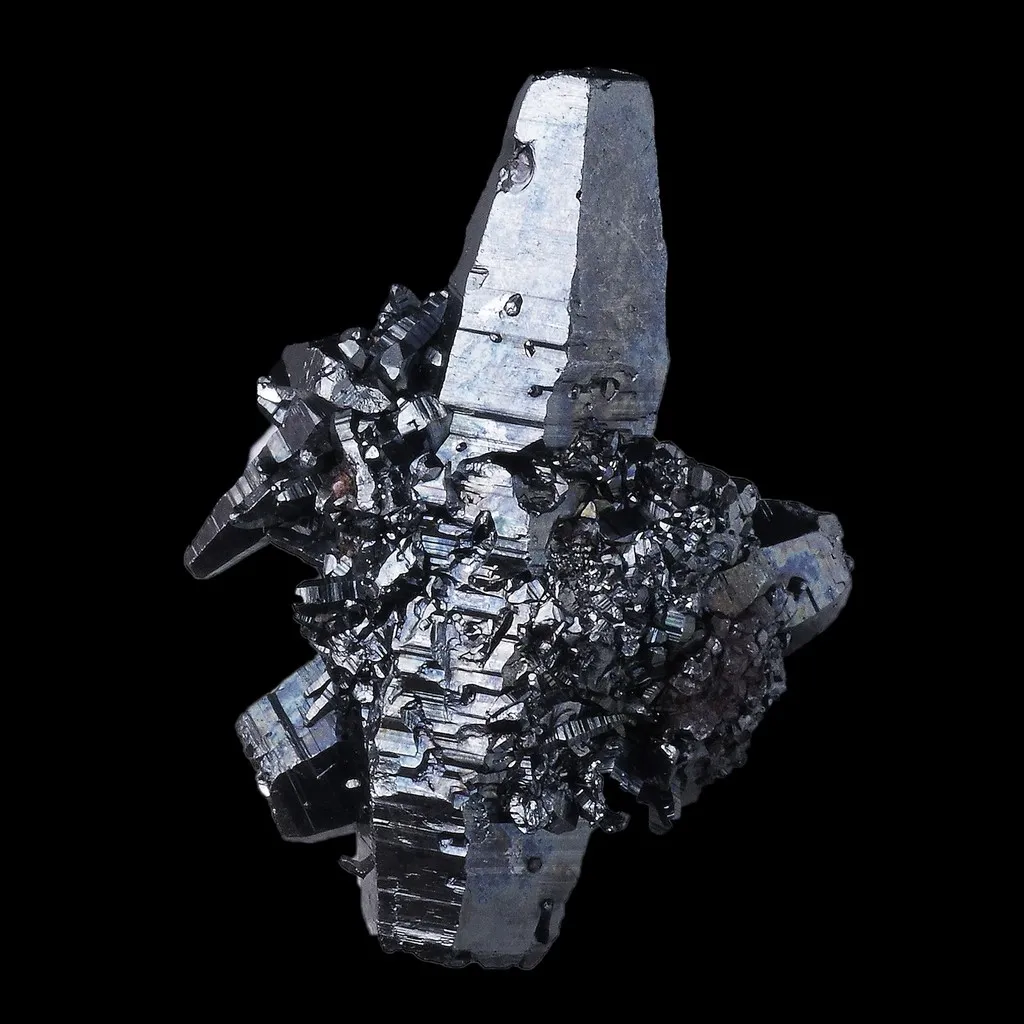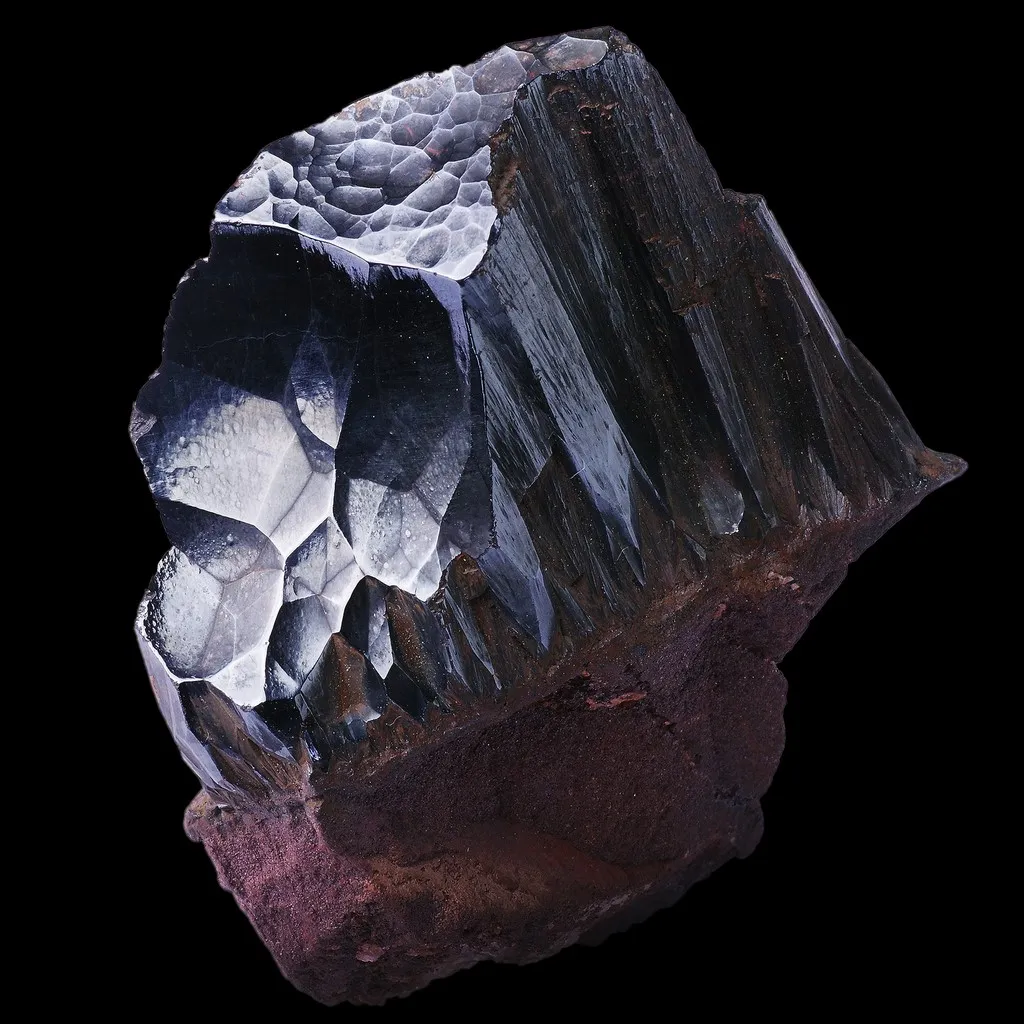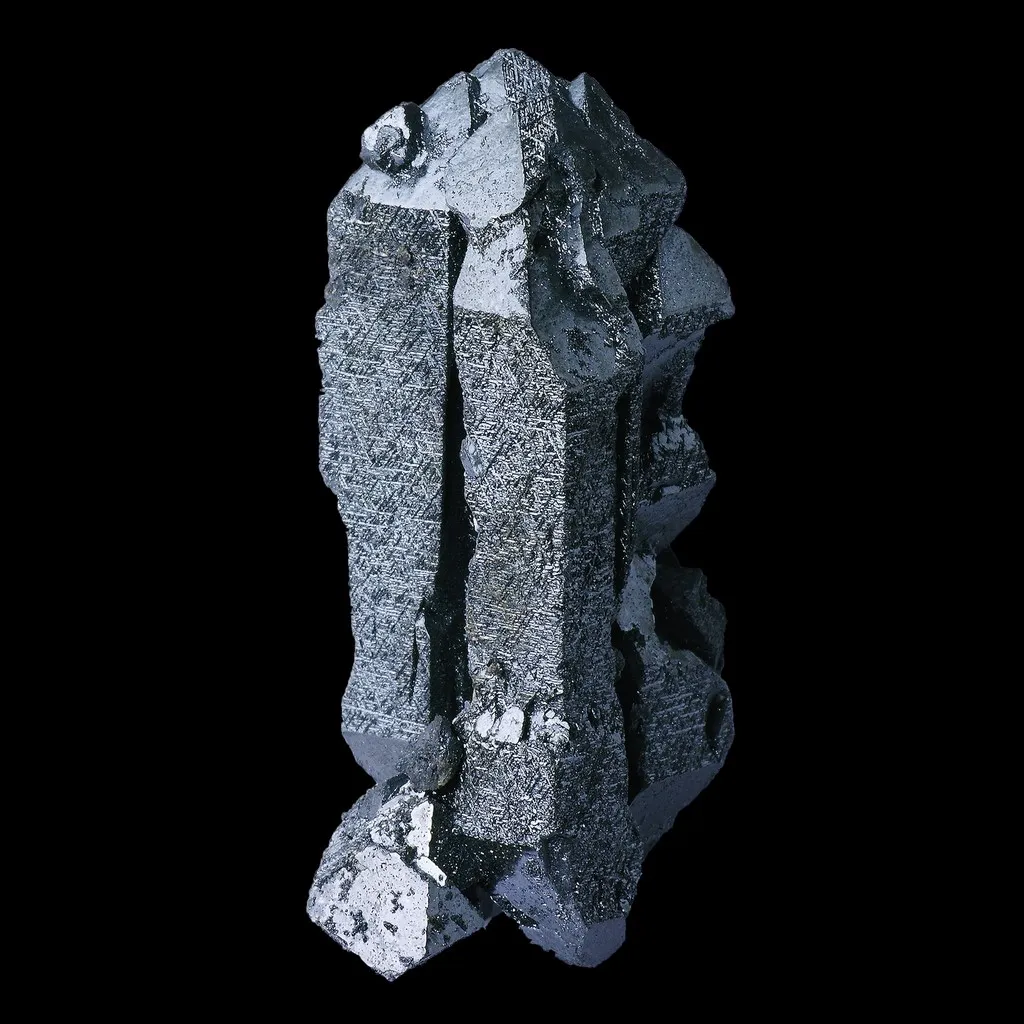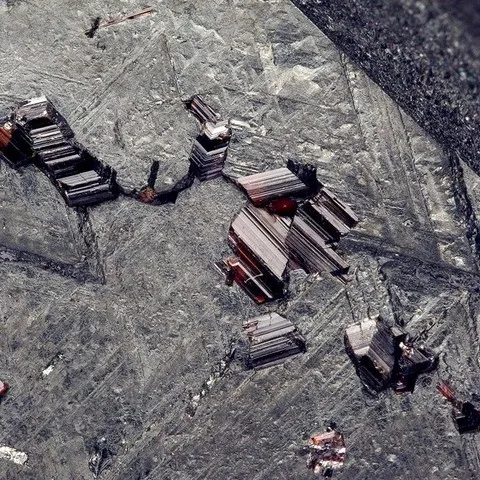HEMATITE

Class : Oxides and hydroxides
Subclass : Oxides
Crystal system : Trigonal
Chemistry : Fe2O3
Rarity : Very common
Hematite is an iron oxide, its name comes from the Greek "haima" (blood) because its trace is red. It is a mineral that is found in a wide variety of geological environments : sedimentary basins, hydrothermal deposits, metasomatic deposits, and more rarely in volcanic fumaroles, in alpine clefts and in veins. It is a mineral that does not oxidize and does not deteriorate, so it can form large alluvial deposits. Hematite occurs in various forms, it can be rosettes of tabular crystals in varying thicknesses, it is called "iron roses", the hematite lamellae can also be randomized or take dendritic forms, they usually have an hexagonal shape. It also occurs in fibrous to compact masses, sometimes with botryoidal surface. More rarely it can replace octahedrons of magnetite, called hematite pseudomorph after magnetite (or martite). In very rare cases the crystals may be prismatic identical to those of the corundum with which it shares an identical crystalline structure. It is always gray-black, very small crystals (including micro-crystals) are blood red. This is the main iron ore for the production of cast iron, steels, alloys. Finely crushed, it is also used as a pigment in the glass and ceramic industry, prehistoric men had also understood that because they used the coloring property mixed with oils to paint murals on the walls of their caves. More rarely it is cut and used in jewelery.
Photo : Botryoidal hematite from Irhoud Desert, Morocco © Rémi Bornet
Hematite in the World

Hematite in France
France has beautiful small deposits that provided superb crystallizations. We can note especially very bright lamellar crystals and sometimes dendritic from Auvergne volcanic massifs (Chaîne des Puys and Massif du Mont-Dore), some reaching up to 10 cm ! The Vosges also produced beautiful tiny shiny crystals whether as Stahlberg at Bréouzard or in Framont.
Twinning
The hematite twins are extremely rare... We can note twinned crystals from South African deposits as N.Chwaning II Mine. Large twinned hematite crystal can be associated with ettringite.
A particular shape is to be noted is the epitaxial growth of rutile on hematite crystals. These can form true 6 pointed stars highly sought by mineral collectors. Hematite in these stars is not twinned unlike sometimes rutile crystals (photo in margin). The best epitaxies occur on deposits of Bahia in Brazil.
Photo 1 : Epitaxial rutile on titaniferou hematite from Mwinilunga, Zambia © Rémi Bornet
Photo 2 : Twinned hematite from N'Chwaning II Mine, South Africa © Rémi Bornet
Fakes and treatments

A major scam exists around hematite and floods the market today. Indeed, there are hematite at all mineral shows : tumbled stones (photo in margin) or costume jewelry (photo below). You should know that although sold as hematite, many of these objects are not hematite, and absolutely do not contain hematite ! It is often in reality an industrial material made from ceramic and ferrite, it is sometimes called "hematine" and is designed to make magnets... You can easily recognize the fake hematites because they are attracted by a magnet while natural hematites are not.

Hardness : 5,5 à 6,5
Density : 4,9 to 5,3
Fracture : Sub-conchoidale to irregular
Trace : Red
TP : Opaque
RI : Unmeasurable
Birefringence : Unmeasurable
Optical character : Unmeasurable
Pleochroism : None
Fluorescence : None
Solubility : Hydrochloric acid
Magnetism : None
Radioactivity : None

